Many thanks to SWLing Post contributor, Jerry Rappel, who writes:
Being both retired, my wife and I frequently visit various estate sales and garage sales. I’m mainly looking for ham radio items, vintage radios, Beatles items, and pre 1925 – 78 records. I have been rather lucky in finding a couple vintage phonographs, vacuum tubes, and other items that I try to fit into my over stuffed ham radio room.
This day at an estate sale I did a breathtaking double take on a Geochron Special boardroom model world wall clock sitting on a table in a special wood desktop display stand (these stands alone are around $200.00 according to their website). And it had a small engraved presentation placard on the bottom front panel. (Thanks to XXXXX and Associates for your contribution).
The clock was marked $150.00. I took some pictures and checked it out on line when I returned home, sure enough this was the clock I had sent for additional information on in a ham radio magazine many years ago, discovering to my surprise it was over $1,200. Off my list immediately. WOW!! The very next day I was at the sale again as it was 20% off the second day!! I plugged it in to make sure all was well with it, and immediately took it to the table to purchase it, all 38.4 pounds of it.
Before the internet, the Geochron World Clock was the only way to see the Sunrise and Sunset on Earth in real-time, in sync with the Earth’s 23.4 degree axial tilt against the Sun. President Reagan presented as a gift to Mikhail Gorbachev as an example of American Engineering, and these photogenic world clocks have appeared in motion pictures like the The Hunt for Red October.
So back home again, I designed a solidly built shelf for it above my computer monitor, with special supports. 34 x 22 x 7 inches it just fits. This is a great help for my ham radio and SWL propagation.
I’m still in amazement at this unique find and what I paid for it. No one at the sale really knew what it was, including the people giving the estate sale! Yes I lucked out big time, being in the right place at the right time. Estate sales are great!!
There is a new version of this clock out now: The Geochron Digital 4k UHD gives viewers beautiful displays of the Earth with the sunrise-sunset rendered in real-time through a small computer that plugs directly in to your TV via HDMI.
The size of your display is only limited by the size of your TV, as you take in the terrestrial movement of the Earth’s orbit in sync with the Sun.
Yes indeed, Jerry, you certainly snagged that Geochron for a brilliant price! Those mechanical clocks are truly a masterpiece of engineering and design.
I love the versatility of the 4K Digital Geochron clocks and had considered reviewing one for a magazine shortly after they were introduced.
Readers: If you love the idea of a greyline/sunlight map in the radio shack, but can’t afford a proper Geochron clock, consider building a simple Raspberry Pi version! I’m about to re-purpose a Raspberry Pi 3B to be a dedicated map based on these instructions. All in–if you use an existing monitor/TV–the project will only set you back $35 or so. In my case, even the Raspberry Pi is an extra unit sitting here in the shack waiting for the project! I’m also considering Ham Clock as it has more options for customization. When I finally have a bit of time to do the project, I’ll publish it on the SWLing Post!
Thanks again, Jerry!

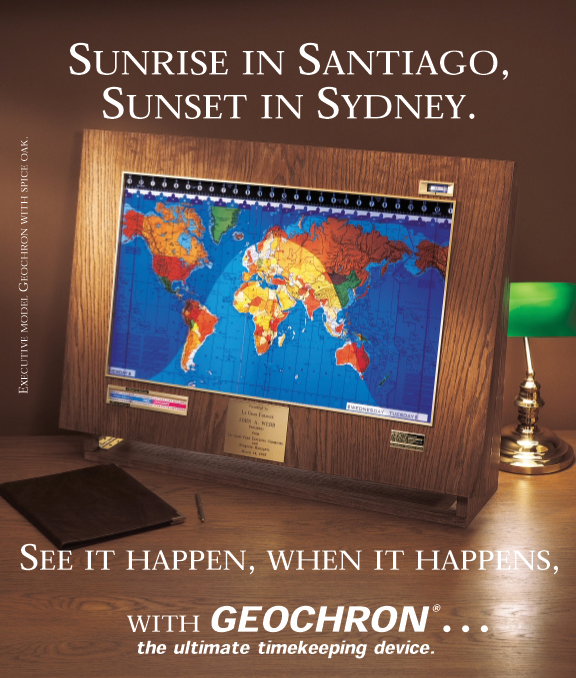
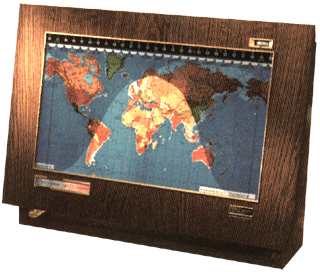
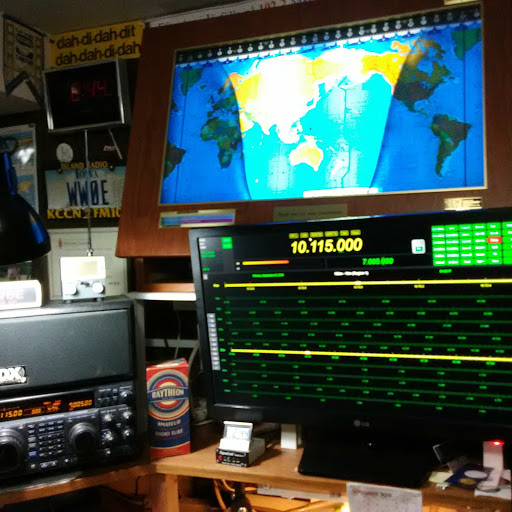
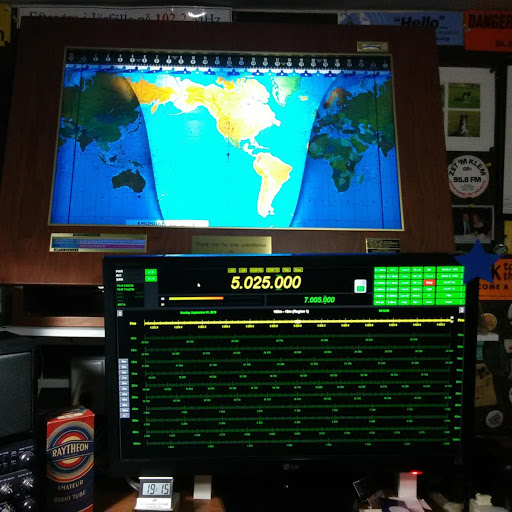
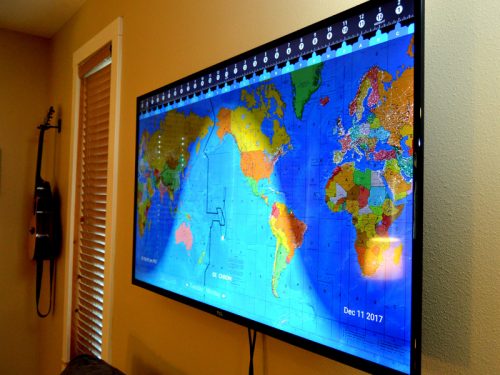
I don’t know how I missed this post. Yeah you got a real good price on the Geochron Jerry. I found one locally on Craigslist over the summer for $150 and the guy even delivered it to my home. Same model as yours…..I think they call it the “Classic”. Except yours is the more expensive ‘ Boardroom’ model while mine is the “computer” finish. I guess because the frame color matches a computer monitor or something.
He even had all of the original documentation including manual, pamphlets, price lists, and a letter from the then president of the company thanking him for inquiring about the product. I think the original owner had the maps swapped out at some point also. Darned if it doesn’t keep perfect time also…..as long as you don’t unplug it that is. Also the company is within a half-hour drive from me if it ever needs servicing which is a plus.
Good deal on the clock and you really snagged a bargain!
Sunclock, referred in the Raspberry Pi article, is a nice little program. I had it installed on my Linux system in the past. A more versatible alternative is xplanet. It is also available in Raspbian repositories. A useful property of xplanet is its capability to show the globe in the azimuthal projection with the user’s QTH as the centre. In this way, the radio waves travelling via (or originating from) the QTH would be straight lines in the map.
For the ones willing a similar device, here’s how to build one using a raspberry pi a display and some software
http://www.kd2iff.com/node/20
sure, won’t have the same fashion as the original, but will still be useful and cool 🙂
Oh and if you want a full wall size clock, you may just connect the video output from the Raspberry PI board to a projector and you’ll have a “NASA control room” alike wall clock/map.
Also notice that while the instruction at the site show how to setup a “basic” version of the clock, it’s possible to modify it to show further informations on the screen, including, if one wants some orbits (the data may be obtained from sites like n2yo or similar others) 😀
Whoops, I just realized that Thomas already wrote about that RPI device (blush, forgive me) !!
Anyhow, if you can’t or don’t want to build your own hardware you may still enjoy a similar map using your computer, just go here https://www.die.net/earth/ and you’ll have your world map with sunlight 😀
I still have my DX Edge, by Xantek, Inc. This slide rule-style device was was purchased new in the early 1980’s and features a black and white map with red terminator slides for each month of the year. https://www.universal-radio.com/used/sold806.html
I also have and still use a Xantek DX edge. Actually, I have two, the older monchrome version (which has a “Beam Heading” overlay for 40 degrees North- wish I could find one for lower latitudes since I now live at 25 degrees North) and the later color version. Absolutely love them for planning gray line listening in advance.